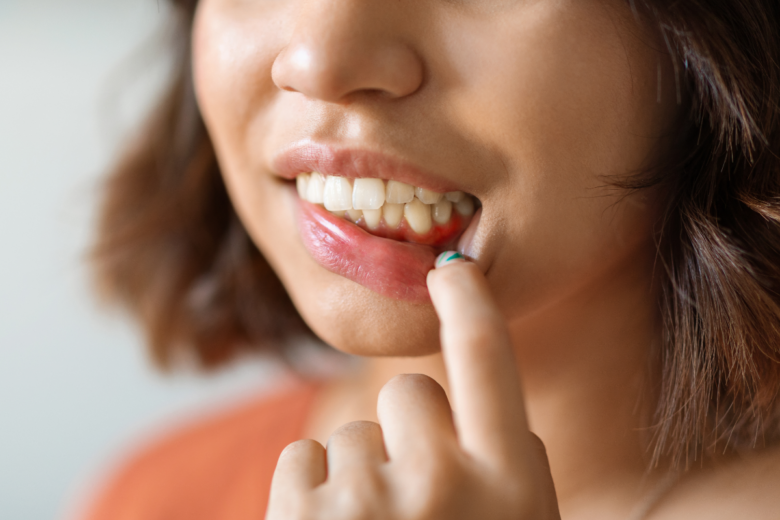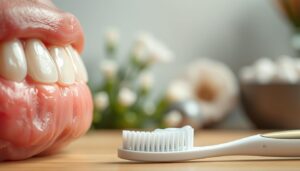Gum health plays a crucial role in maintaining overall oral well-being. Often overlooked, the gums are essential not only for supporting the teeth but also for protecting the underlying structures. Healthy gums act as a barrier against bacteria and plaque, preventing infections that could lead to more severe oral conditions, such as gingivitis and periodontitis. Moreover, gum health is linked to broader systemic health, with studies indicating a connection between gum disease and conditions like heart disease, diabetes, and even stroke. This makes caring for the gums just as important as looking after the teeth.
When it comes to gum care, prevention is always the best approach. While daily oral hygiene practices like brushing and flossing are critical, they may not always be enough to remove all plaque and tartar, which can accumulate along the gumline. This is where dental prophylaxis comes into play. Regular professional cleanings not only help in removing stubborn plaque and tartar but also provide a chance for early detection of potential gum issues. By incorporating prophylaxis into a regular oral care routine, individuals can protect their gums from disease and ensure a healthier smile.
The Role of Dental Prophylaxis in Gum Care
Dental prophylaxis, often known as professional cleaning, is a preventive treatment designed to safeguard gum health. Unlike routine brushing and flossing, which are essential for daily oral care, prophylaxis involves a thorough cleaning by a dentist or hygienist that removes plaque, tartar, and bacteria buildup from the gums and teeth. Regular dental prophylaxis helps to keep the gums healthy, reduce inflammation, and prevent the onset of gum diseases. By removing hardened plaque (tartar), which can’t be cleaned away by regular brushing, dental prophylaxis ensures that the gums remain free from harmful bacteria, promoting long-term oral health.
In this article, we will explore how dental prophylaxis serves as a vital tool in treating and preventing gum issues, offering insights into its benefits, procedure, and how it helps maintain healthy gums.
What is Dental Prophylaxis?
Definition and Objectives of the Treatment
Dental prophylaxis, commonly referred to as a professional cleaning, is a preventive dental procedure aimed at maintaining optimal oral health by removing plaque, tartar, and bacteria from the teeth and gums. Unlike basic at-home brushing and flossing, prophylaxis goes deeper, addressing the hard-to-reach areas where plaque accumulates and hardens into tartar. This buildup can lead to gum disease and other dental problems if left untreated. The primary goal of dental prophylaxis is to prevent these issues by thoroughly cleaning the teeth and gums, promoting overall oral health, and reducing the risk of oral diseases.
Difference Between Prophylaxis and Other Dental Procedures
Dental prophylaxis is often confused with other dental procedures, but it serves a unique and essential role. Unlike regular check-ups or treatments like fillings and root canals, prophylaxis is strictly preventive. It does not address existing cavities or infections but focuses on removing plaque and tartar before they develop into more serious dental conditions. Other common dental procedures, such as scaling and root planing, are often required when periodontal disease has progressed, whereas prophylaxis is effective when gum health is still intact.
How Dental Prophylaxis Benefits the Gums
Prevention of Gum Diseases like Gingivitis and Periodontitis
One of the most significant benefits of dental prophylaxis is the prevention of gum diseases such as gingivitis and periodontitis. Gingivitis, the earliest stage of gum disease, is caused by the accumulation of plaque along the gum line, leading to inflammation, redness, and bleeding of the gums. If not addressed, gingivitis can develop into periodontitis, a more severe form of gum disease that can lead to tooth loss. By regularly undergoing prophylaxis, plaque and tartar are removed before they can trigger such diseases, maintaining healthy gums.
Elimination of Bacterial Plaque and Tartar
Plaque, a sticky film of bacteria that forms on the teeth, is the primary cause of gum disease. While brushing and flossing help remove plaque, it can accumulate in hard-to-reach areas. Over time, plaque hardens into tartar, which can only be removed by a dentist during a professional cleaning. Dental prophylaxis removes both plaque and tartar from the teeth, ensuring that bacteria cannot accumulate and cause harm to the gums.
Improvement in Gum Blood Circulation
Regular dental prophylaxis also promotes healthier gums by improving blood circulation. When plaque and tartar are removed, the gums become less inflamed, and the circulation of blood to the gums improves. This increased blood flow aids in the healing and nourishment of gum tissues, keeping them strong and resilient.
The Dental Prophylaxis Procedure: How It Works
Step-by-Step of the Treatment
A typical dental prophylaxis procedure involves several key steps:
- Initial Examination: The dentist or hygienist will first examine your mouth to assess the overall health of your teeth and gums.
- Scaling: Using special instruments, the dentist will remove plaque and tartar from the surface of the teeth, including beneath the gum line.
- Polishing: After scaling, the teeth are polished to remove any remaining plaque and to smooth the tooth surface, making it more resistant to future plaque buildup.
- Flossing: The dentist may also floss between the teeth to remove any debris or plaque that is hard to reach.
- Fluoride Treatment: Some dental professionals apply a fluoride treatment at the end of the procedure to help strengthen the enamel and protect the teeth against decay.
Tools and Techniques Used by Dentists
Dentists and hygienists use various tools during the prophylaxis procedure, including hand scalers, ultrasonic scalers, and polishing brushes. Hand scalers are used to manually remove plaque and tartar, while ultrasonic scalers utilize vibrations and water to break down and wash away buildup. Polishing brushes and pastes are used to smooth the teeth and remove any remaining plaque after scaling.
When is Dental Prophylaxis Necessary?
Recommended Frequency
The frequency of dental prophylaxis varies depending on individual oral health needs. Most dental professionals recommend undergoing a professional cleaning every six to twelve months. However, individuals with specific oral health concerns, such as a history of gum disease or excessive plaque buildup, may require more frequent cleanings to maintain optimal gum health.
Signs Indicating the Need for the Procedure
Certain signs can indicate that a dental prophylaxis session is necessary, such as:
- Red, swollen, or bleeding gums, especially when brushing or flossing
- Persistent bad breath
- Teeth that appear yellow or stained due to plaque buildup
- Gum recession or pockets forming between the teeth and gums
Long-Term Benefits of Dental Prophylaxis for Gums
Prevention of Tooth Loss
One of the long-term benefits of regular dental prophylaxis is the prevention of tooth loss. Gum disease, particularly periodontitis, is a leading cause of tooth loss in adults. By preventing the development of these diseases, prophylaxis helps maintain the health and integrity of the teeth and gums, reducing the risk of tooth loss.
Impact on Systemic Health
Gum health is closely linked to overall health. Inflammation in the gums can contribute to systemic issues such as heart disease, diabetes, and stroke. By preventing gum disease through regular prophylaxis, individuals not only protect their teeth but also promote their overall health. Prophylaxis helps reduce inflammation and lowers the risk of these severe health conditions.
The Relationship Between Dental Prophylaxis and Oral Hygiene Habits
How to Keep Gums Healthy After Treatment
While dental prophylaxis is essential for maintaining gum health, it is equally important to follow proper oral hygiene habits at home. Regular brushing with fluoride toothpaste, flossing daily, and using mouthwash can help prevent the buildup of plaque and bacteria between dental visits. Maintaining good oral hygiene will prolong the effects of dental prophylaxis and help keep your gums healthy in the long run.
The Importance of Flossing and Proper Brushing
Brushing your teeth twice a day and flossing regularly are fundamental to maintaining the health of your gums. Brushing removes plaque from the surfaces of the teeth, while flossing helps eliminate plaque from between the teeth and along the gumline. Both practices, when done correctly, are essential for preventing gum disease and ensuring that the benefits of dental prophylaxis are lasting.
The Crucial Role of Dental Prophylaxis in Maintaining Oral Health
Dental prophylaxis plays an indispensable role in the overall maintenance of oral health, particularly in the prevention and treatment of gum diseases. By removing plaque and tartar from areas that regular brushing and flossing cannot reach, prophylaxis helps to prevent the onset of conditions like gingivitis and periodontitis, which can lead to tooth loss and more serious health issues if left untreated. Regular professional cleanings are a proactive approach that ensures the long-term health of your gums and teeth, offering a solid foundation for a healthy smile and preventing expensive dental treatments in the future.
In addition to its direct benefits for gum health, dental prophylaxis also contributes to your overall well-being by reducing inflammation and lowering the risk of systemic conditions such as heart disease and diabetes. By addressing the root causes of gum disease early, prophylaxis supports not just a healthy mouth but a healthier body overall.
Additional Care to Ensure Long-Term Gum Health
While dental prophylaxis is a key factor in maintaining healthy gums, it is essential to complement this treatment with consistent at-home oral care. Brushing your teeth twice a day with fluoride toothpaste, flossing daily, and using an antibacterial mouthwash are all critical habits that support the effects of professional cleanings. Regular check-ups with your dentist will help you monitor your oral health and catch potential issues before they become more serious.
Additionally, adopting a healthy lifestyle—such as avoiding smoking, eating a balanced diet, and managing stress—can further contribute to the health of your gums and teeth. Maintaining these habits, alongside routine dental prophylaxis, will help ensure your gums stay healthy for years to come.
In conclusion, dental prophylaxis is more than just a cleaning; it’s a preventive measure that safeguards your oral health, prevents gum disease, and promotes overall well-being. By committing to regular prophylaxis treatments and maintaining good oral hygiene practices, you are investing in the longevity of your smile and your health.




